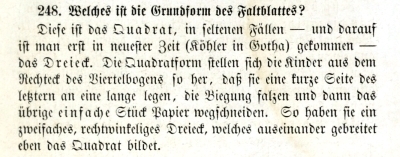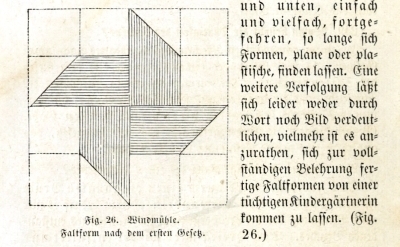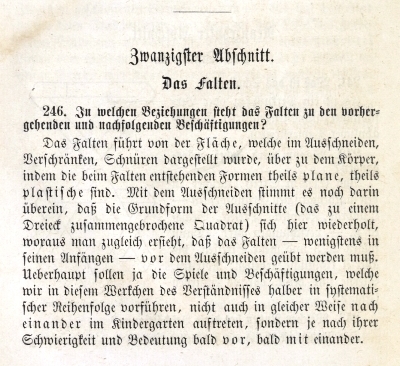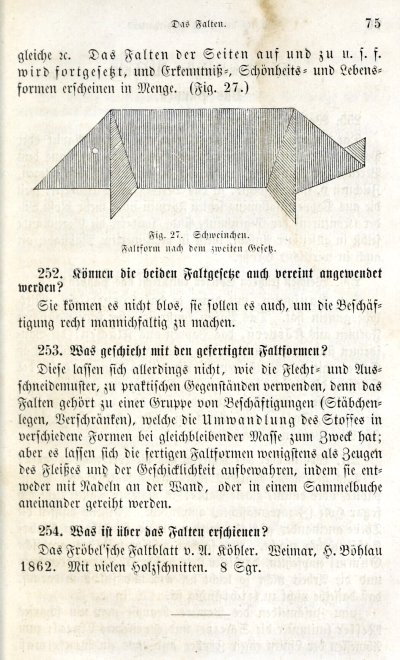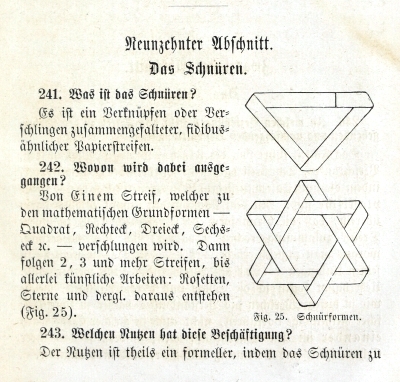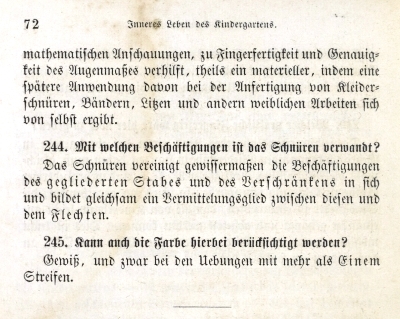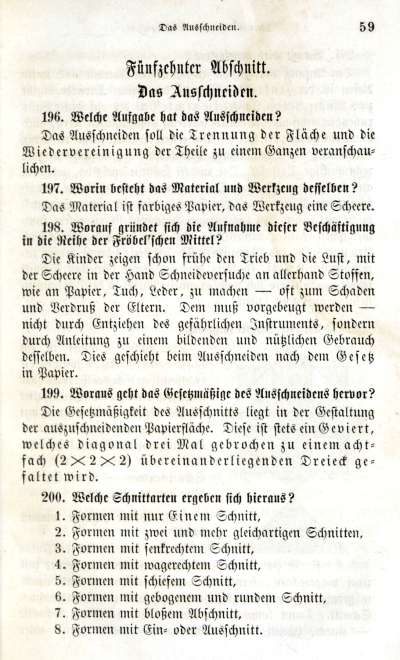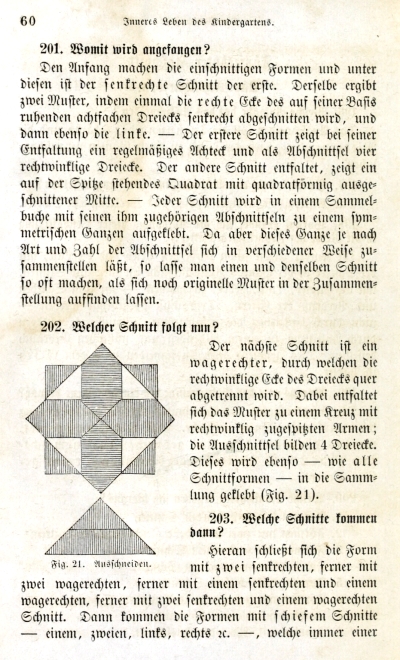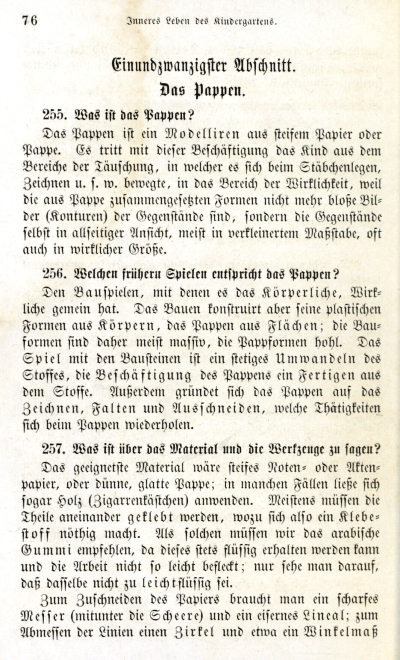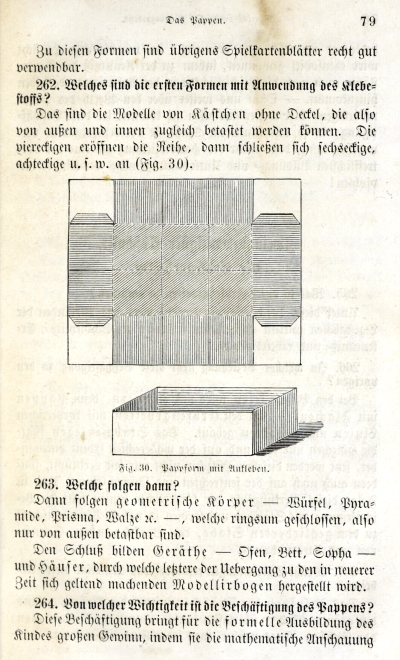| The Public Paperfolding History Project
Last updated 31/10/2025 x |
|||||||
| Katechismus der praktischen Kindergärtnerei by Friedrich Seidel, 1863 | |||||||
'Katechismus der praktischen Kindergärtnerei' by Friedrich Seidel was published by J J Weber in Leipzig in 1863. It contains chapters on Falten, Verschnuren, Ausschneiden und Aufkleben, and Pappen. The Introduction gives a clear and concise account of the state of kindergarten development in December 1862. It also states, roughly translated, that: 'a concise and clearly structured book suitable for this purpose does not yet exist, since Froebel himself never wrote one, but rather published his ideas scattered in leaflets and pamphlets. We therefore believe we are meeting a genuine need by summarising the entirety of kindergarten knowledge and skills ... in a small booklet ...'. Paragraph 248 states that the square is the basic shape of the folding sheet except 'in rare cases, and this has only just been discovered (Koehler in Gotha), the triangle.' Paragraph 249 states: 'Until now kindergartens have only known the first folding rule (ie blintzing the square): the second is a more recent invention by A Koehler.'
A full copy of the work can be accessed online here. **********
**********
********** Analysis Das Falten How to Make Squares from Rectangles This section describes how to make a square from a rectangle by folding the short edge onto the longer and cutting off the excess.
********** Simple Folds of Life The text states: 'The whole is a square envelope, this a life form. Unfolding one of these squares (surely triangles) transforms the envelope into a house.'
********** Other Folds of Life The text goes on to say: 'Unfortunately further developments cannot be clarifieds either by word or image, rather it is advisab;le to obtain ready-made folding forms from a competent kindergarten teacher for complete instruction. (Fig 26); ... which is The Windmill.
********** Koehler's Groundform The method of making Koehler's Groundform by folding in the two sets of opposite sides in turn is described. The text says: 'Folding the sides open and closed is continued, etc, and Erkennnisformen, Schonnheitsformen and Lebensformen appear in abundance.' The Pig is shown as an example. Paragraph 249 states: 'Until now kindergartens have only known the first folding rule (ie blintzing the square): the second is a more recent invention by A Koehler.'
***
********** The Pig
**********
********** Das Schuren - Verschnuren
********** Das Ausschneiden - Ausschneiden und Aufklaben
********** Das Pappen - Cardboard Modelling
********** |
|||||||





